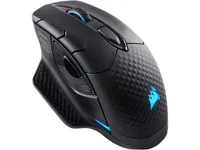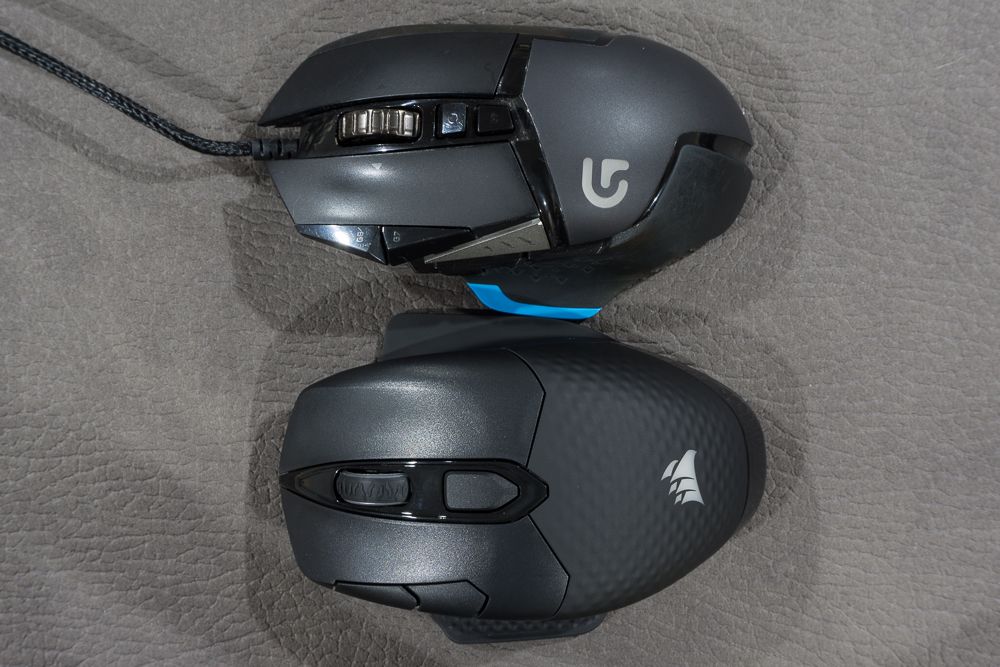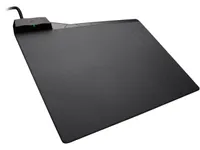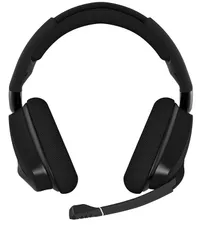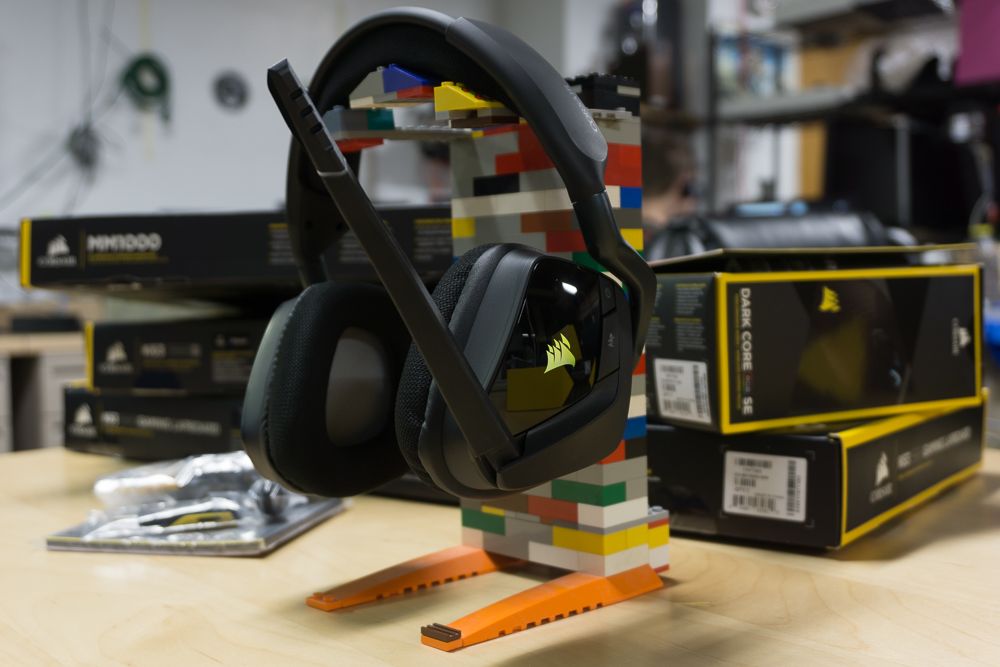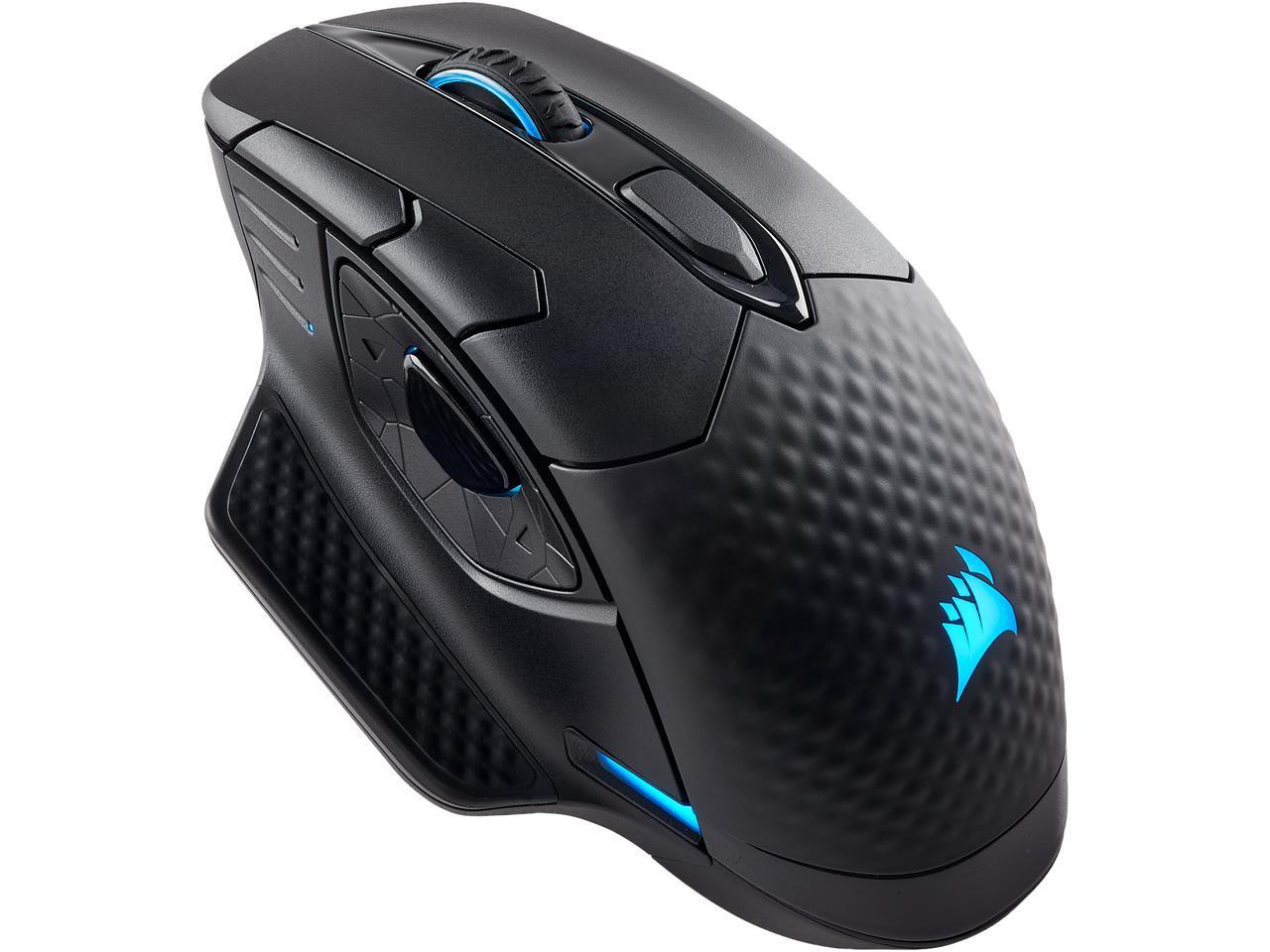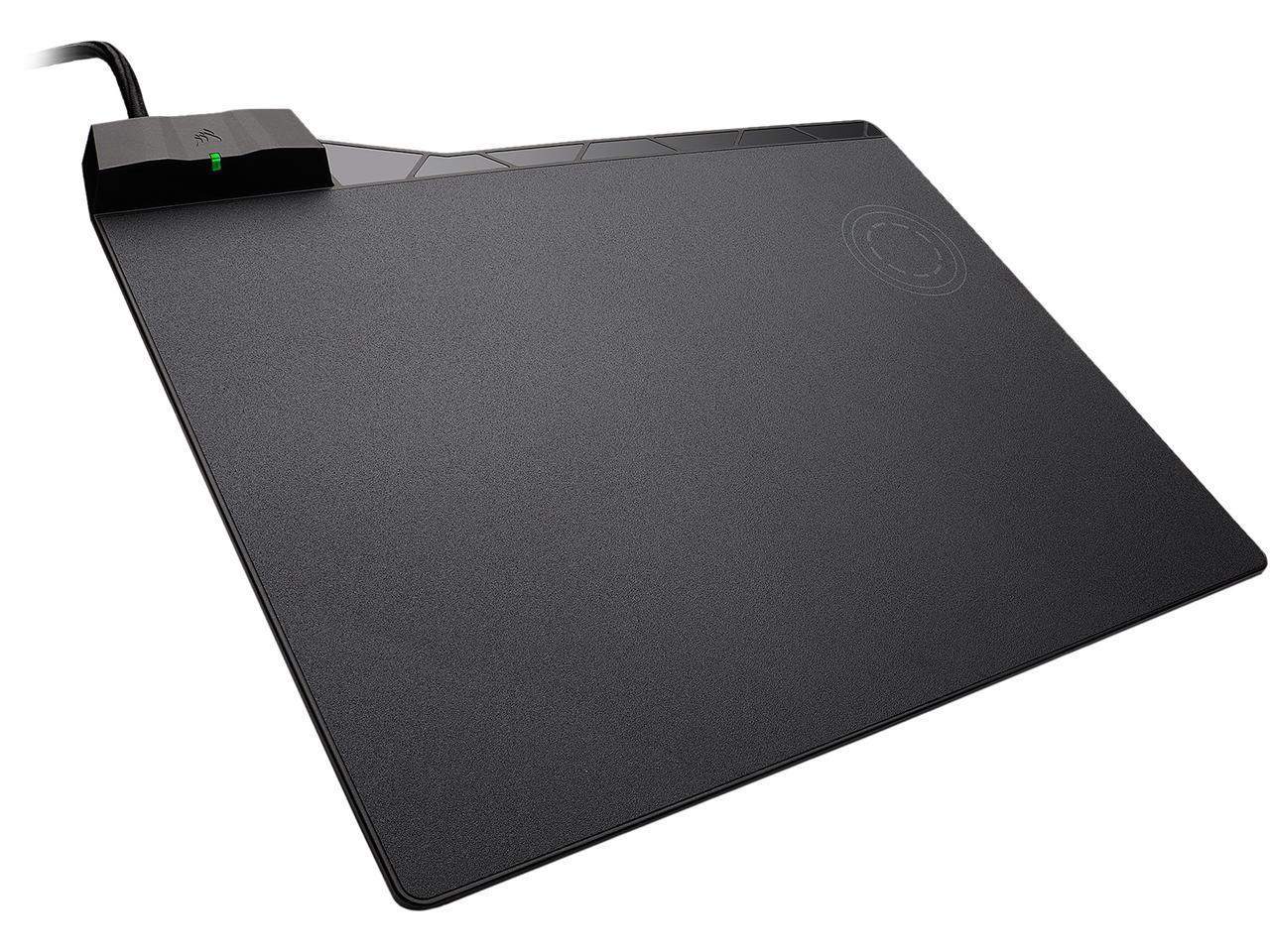Gaming On The Couch: Corsair's Next-Gen Wireless Peripherals, Hands On
The Lapdog, Corsair’s last lapboard project, marked the brand’s entry into living room gaming. Its new Wireless K63 keyboard-plus-Lapboard bundle, when paired with Corsair’s new wireless Dark Core RGB SE mouse and Void Pro RGB wireless headset, aims to make gaming on the couch more convenient.
Gamers have been clamoring for a comfortable couch-based gaming experience. A select few companies have been scrambling to deliver it, including Roccat and Razer, but issues such as small mouse pads and ungainly wire harnesses often diminished the experience for serious enthusiasts. Logitech is also pushing hard into the wireless peripherals world as well, albeit without a lapboard to port it all to the living room.
Corsair’s newest Lapboard combo addresses most of the quibbles that we had with the Lapdog. With a launch price of $159.99, it also costs less than the Lapdog and a compatible keyboard. Wires are absent during use, ergonomics are improved, and assembly is simplified. The result is a viable wireless gaming system that lets you migrate from desk to couch (so long as you’re willing to make a few accommodations). Kudos.
Wireless K63 Keyboard And Lapboard
Corsair’s Lapboard and its accompanying K63 are ready for use upon arrival, though your initial battery level may vary due to self-discharge during warehouse storage. It charges using a USB Micro B cable. The Wireless K63 mechanical keyboard uses linear Cherry MX Red switches. It would be nice to see different switch availability in the future, as each gamer has different preferences.
The Wireless K63 is similar to the wired K63, though it has a few more tricks up its sleeve. Proprietary 2.4 GHz wireless connectivity via dongle promises minimal lag, which is advertised at 1ms. It’s also Bluetooth compatible for easy use with other devices. A smart television with Bluetooth keyboard capability, for example, might pair well with the Wireless K63. We didn’t get a chance to test the combo out, as we don’t have a compatible smart television on hand, but it would certainly beat searching for shows with a remote. Both wireless modes paired properly with our PC, without disconnections, during regular use in a living room-like environment.
The Lapboard itself is a well-built raft of thick plastic. No creaks or moans emanate from its structure if you manhandle or flex it. Its sloping front bezel should accommodate most wrists with ease; this is in contrast to the Lapdog, which had a sharper front edge that we found uncomfortable. The bottom cushion is firm, and its firmness increases the Lapboard’s horizontal stability. Even so, we didn’t find it hard to the point of discomfort when we had it parked on our legs during extended gameplay. A chrome accent, which will face your TV most of the time, adds some flair to the otherwise understated design.


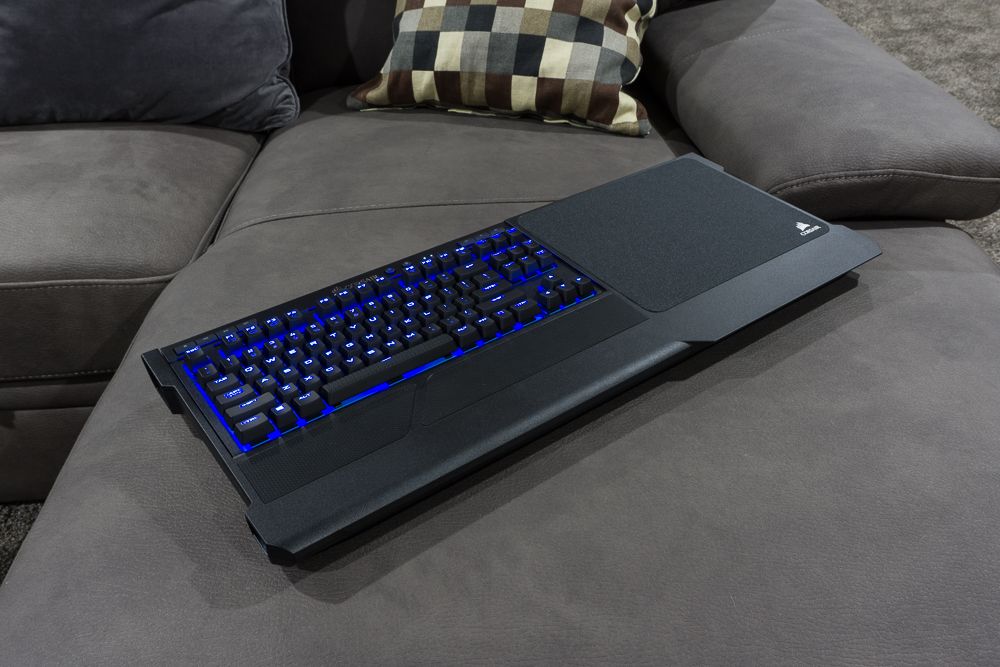
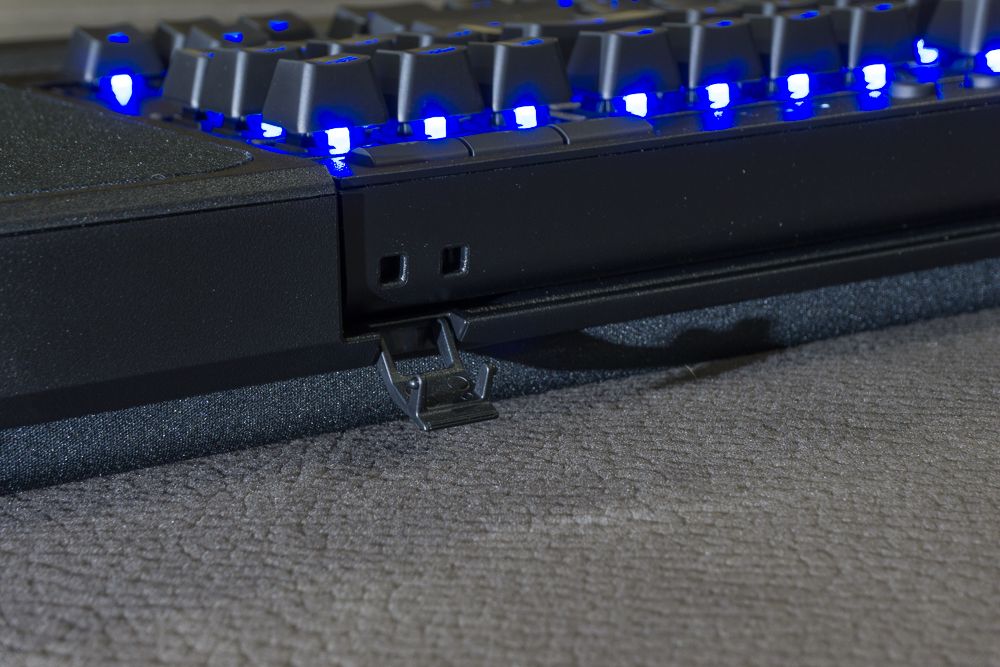
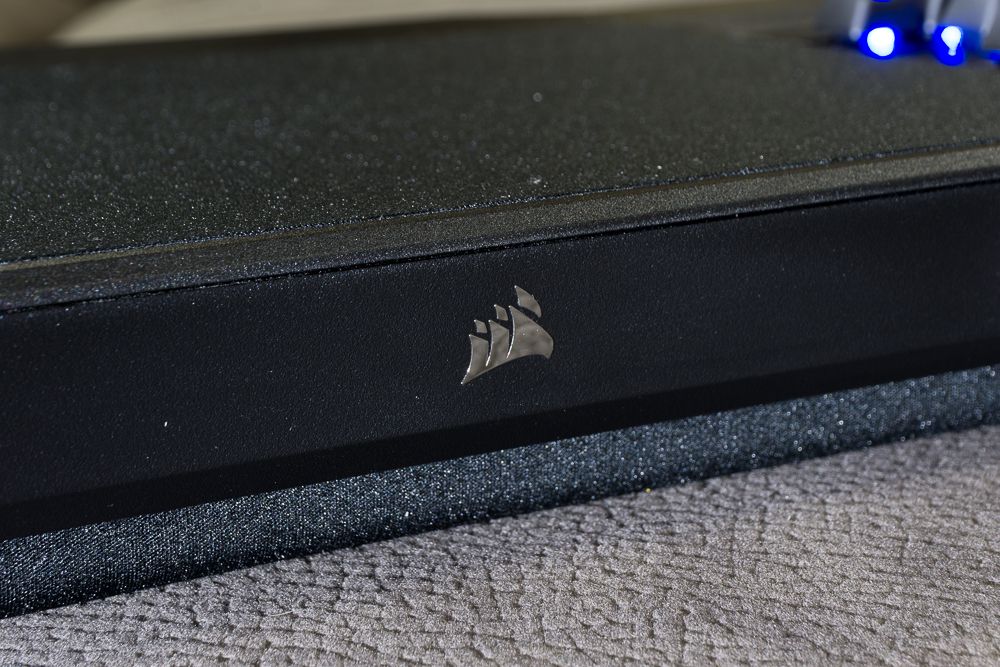
The mouse pad is replaceable, which is important given its cloth surface. Sugary spills, which can be tough to remove from fabric, and long term wear would have been a hassle for users if the pad were fixed in place. Slosh of soda? New Lapboard. Fraying edges? New Lapboard. The mouse pad is affixed using adhesive backing, so replacement shouldn’t involve more than a peel-clean-stick process. (The replacement mouse pad isn’t available at press time, though, so don’t spill anything quite yet. We’ve asked Corsair for a timeline on availability and other pertinent details. Corsair plans to release the pads sometime this year.)
Get Tom's Hardware's best news and in-depth reviews, straight to your inbox.
Combining the K63 and Lapboard is easy and quick. The Wireless K63’s wrist rest connection points mate with similar mounts on the Lapboard, so the keyboard essentially slides into place. Two plastic clips secure the unit completely (and Corsair included spare clips should you need them). This is a massive improvement relative to the Lapdog, which used screws and cable management compartments--those extra steps add setup and teardown time if you want to move your keyboard deskward. We do, however, recommend turning the K63 on before settling in with the lapboard. The K63’s rear mounted power switch can be awkward to turn on while seated. Corsair could improve its usability by mounting the power switch on the keyboard’s upper bezel.
Corsair recommends low backlight settings if you want to preserve the keyboard’s battery life. Higher settings will eat through battery at lightspeed, if you will. It’s also a good idea to keep a soft throw pillow or two nearby while you’re gaming in case your arms get tired. Throw pillows work well as mouse-elbow props or back supports during extended gameplay. We found that the Lapdog benefited from a veritable throne of arm support pillows, or a couch armrest, but this Lapboard doesn’t require anything so drastic.
Dark Core RGB SE Wireless Mouse
Corsair’s Dark Core RGB SE mouse is wireless and wirelessly rechargeable, which adds immense convenience to the desk-couch transition. It’s also positioned to be an all-in-one wireless gaming mouse, as it could be used for mobile PC gaming. Its $89 price point appears to be drawing customers, as Amazon was out of stock when we last checked the site.
It offers the same 2.4GHz / Bluetooth combination as the Wireless K63, so you can casually grab it for a day of Bluetooth use in your laptop kit (if you don’t mind the advertised 7.5ms lag). Contrast that with grubbing around under a desk for a cable or dongle. The Dark Core RGB SE excels in the context of Corsair’s wireless ecosystem, but a few missing features and ergonomic stumbles hold it back from perfection.
The Dark Core RGB SE charges wirelessly on the MM1000 wireless mouse pad, which uses the Qi system, and via USB Micro B cable. Wireless charging is an elegant way to ensure that you can snag your mouse at your desk, walk over to the couch, and plop down for a game of your choice.

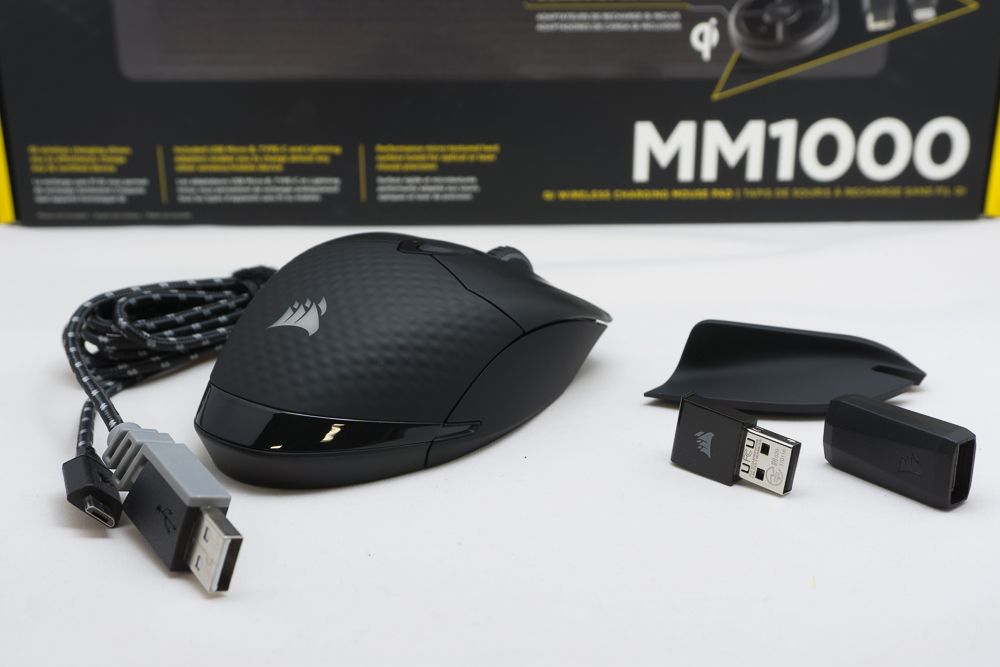
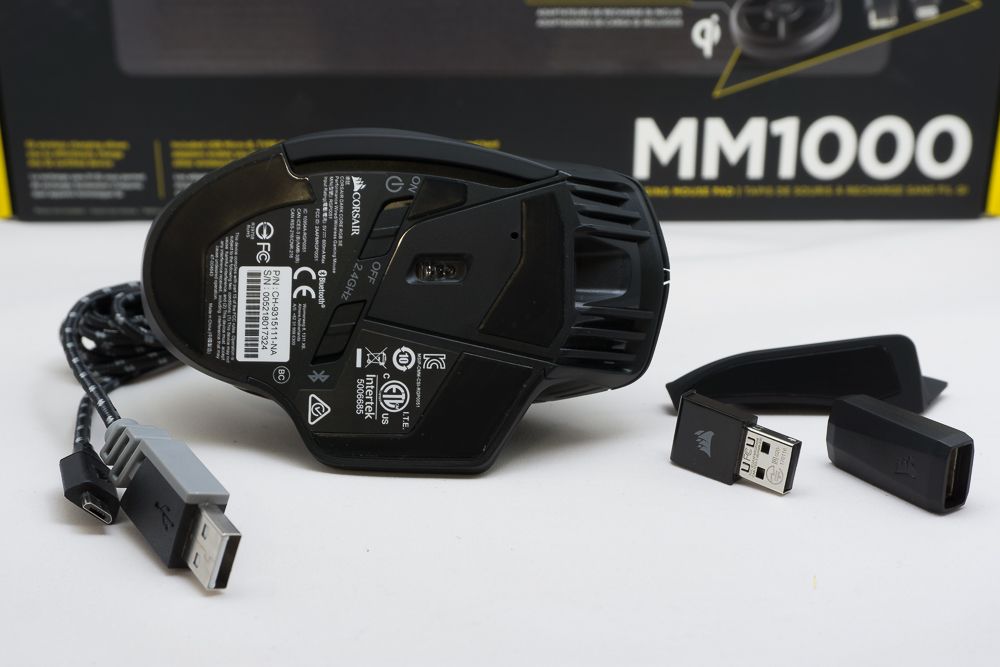
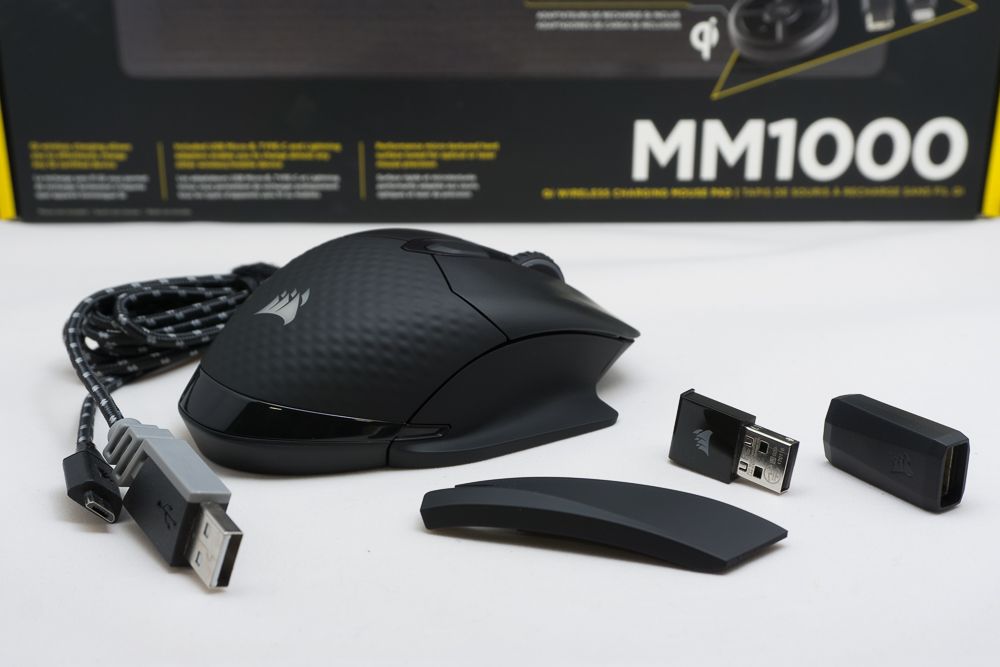

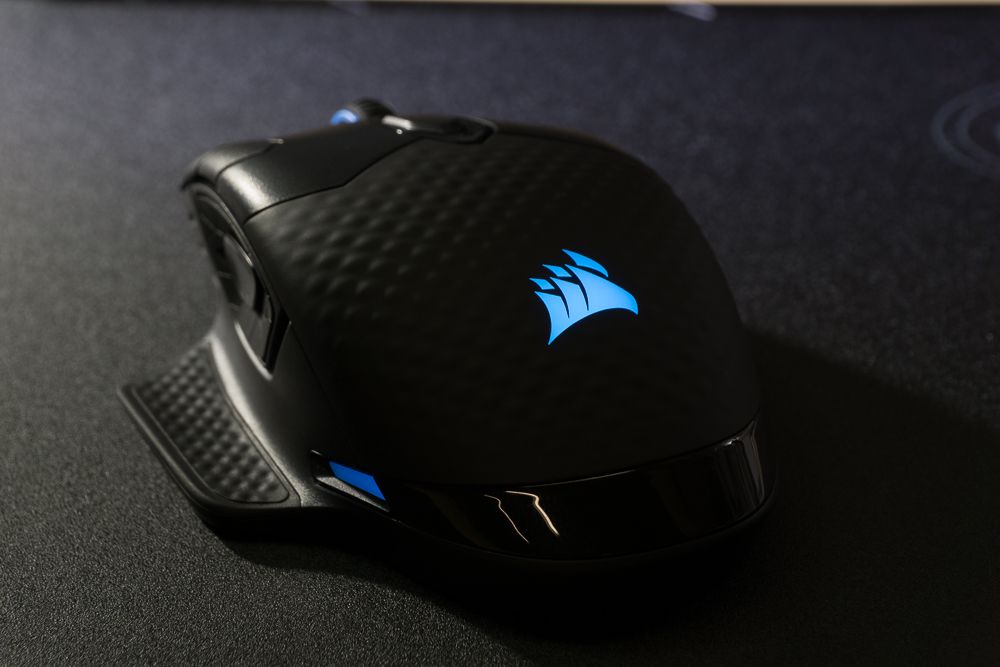
The mouse sensor didn’t skip or lose its place during normal use, its settings are easily configured via CUE, and its overall shape will be comfortable for, at least, adult males with average-sized hands who prefer a palm grip. The modular side panel is also a nice touch. The devil, however, is in the details.
During gaming sessions, we noticed that the top panel of the mouse isn’t flush with the right hand side modular panel. The sharp, protruding edge could rub on one’s pinky joint and cause discomfort. A user would probably build a callus with continual use, but that’s less than ideal.
Button placement felt off kilter to us. The most odd are the two buttons placed adjacent to the side of the left click button. You can’t really click them with your thumb or your index finger, at least not without extensive finger curl. We found their use to be rather difficult and uncomfortable given our average sized adult male hands (which measure about 7.5" or 19cm from middle finger tip to wrist). This is in contrast to the Logitech G502, which offers two similar buttons in a more ergonomic location.
The actual thumb buttons, which are on either side of the central “sniping” button, were difficult for us to depress because they’re recessed. It’s particularly tough to activate those buttons in a claw grip, as one’s thumb joint is placed on the seam between the upper and lower mouse panel.
The Dark Core RGB SE also takes a pass on features like adjustable weights and horizontal-tilt scroll wheel buttons. If you’re coming from a Logitech mouse, or another brand that employs those elements, it might be a struggle to adapt.
MM1000 With Qi Wireless Charging Zone
The MM1000 hard-surface mouse pad, when paired with the Dark Core RGB SE wireless mouse, is a compelling implementation of wireless charging technology. It’s easy to flick the Dark Core RGB SE into its charging zone before leaving one’s desk. The use of Qi, as opposed to Logitech’s proprietary wireless charging system, allows Qi-enabled smartphones and other devices to charge within arm’s reach while you game. Even larger phones should be able to charge without mouse interference due to the pad’s generous 34.8 x 25.5cm (13.7 x 10") usable area.
Its $80 sticker price may be a bit steep for some consumers, but new tech is rarely cheap. The MM1000 also happened to be out of stock at Amazon when this article was published.
Its braided USB 3.0 cable occupies two ports, though the listed power draw of 900 mA is well within USB 3.0 specifications. A single passthrough port, located on the left side of the pad to avoid cable interference, makes the dual port usage hurt less. The USB port’s rear orientation makes it suitable for mice and other peripherals that aren’t regularly removed. Our only quibble with the cable is that its sleeving is a bit gnarly near its entry point on the mouse pad.
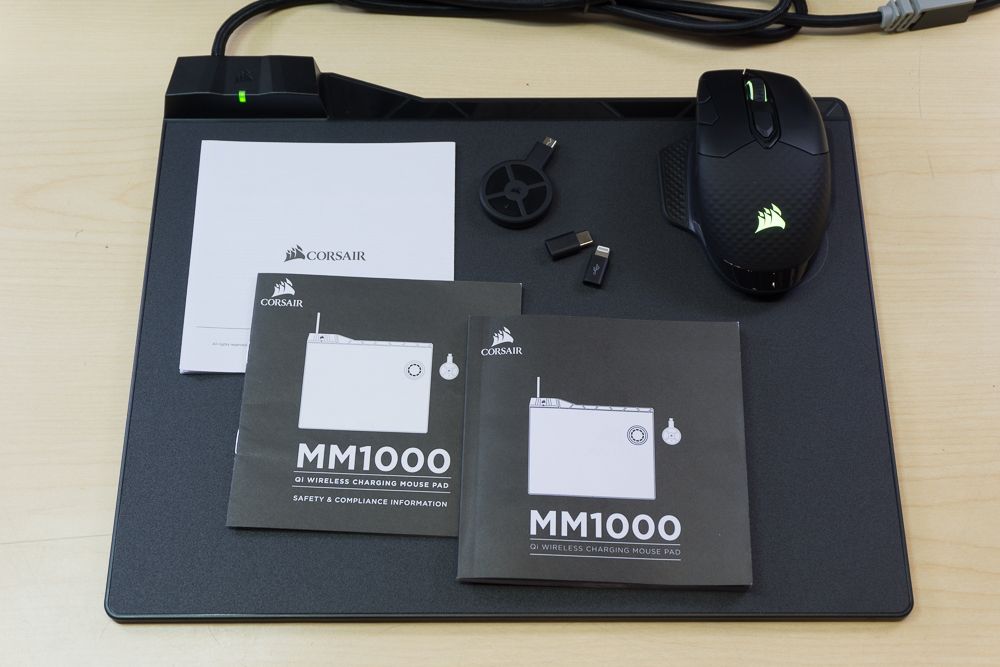
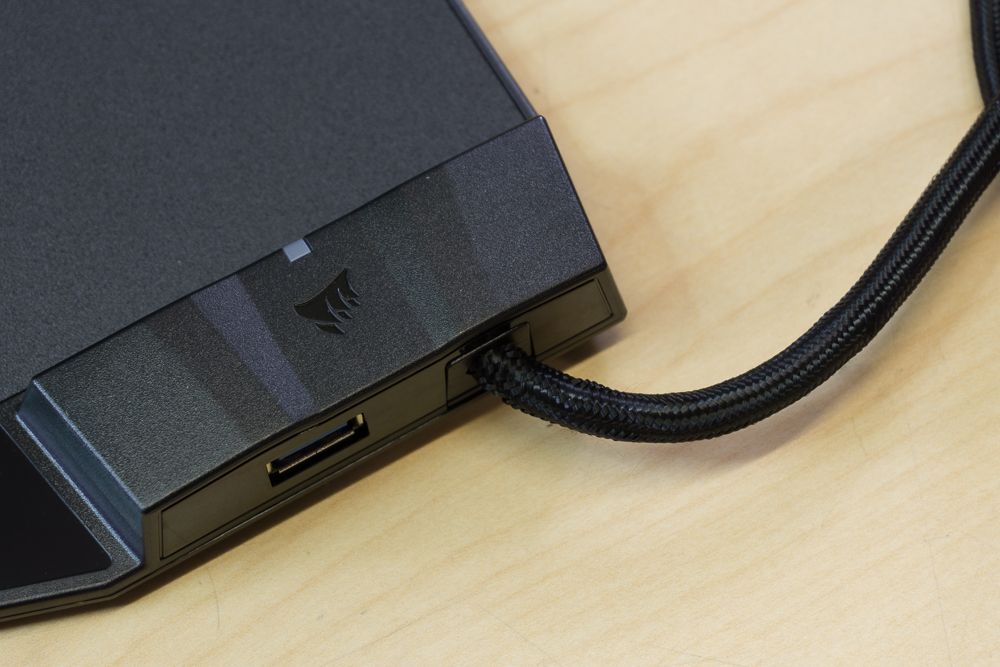
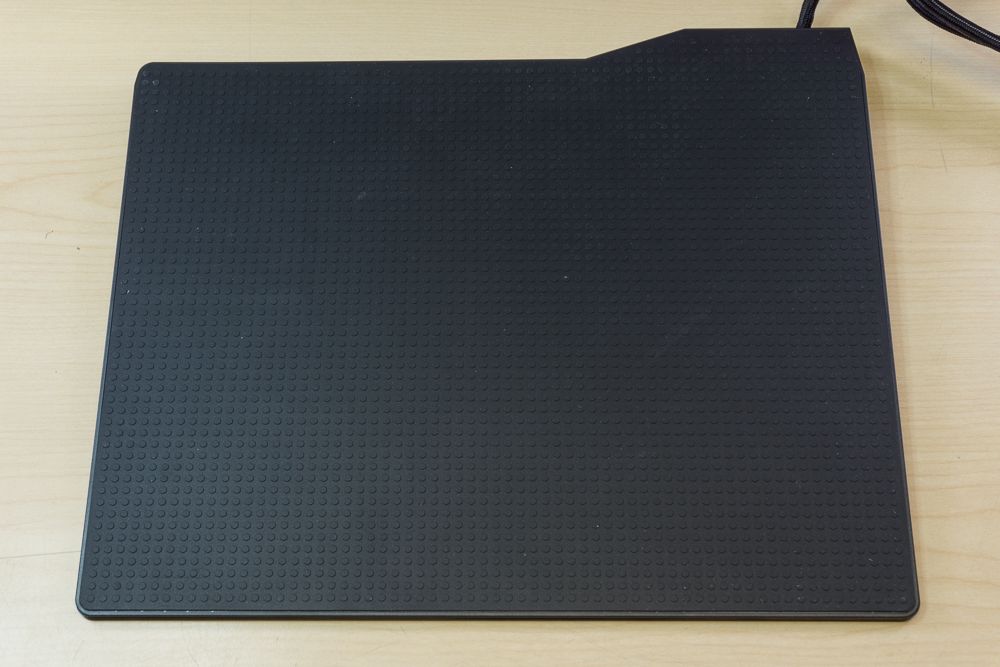


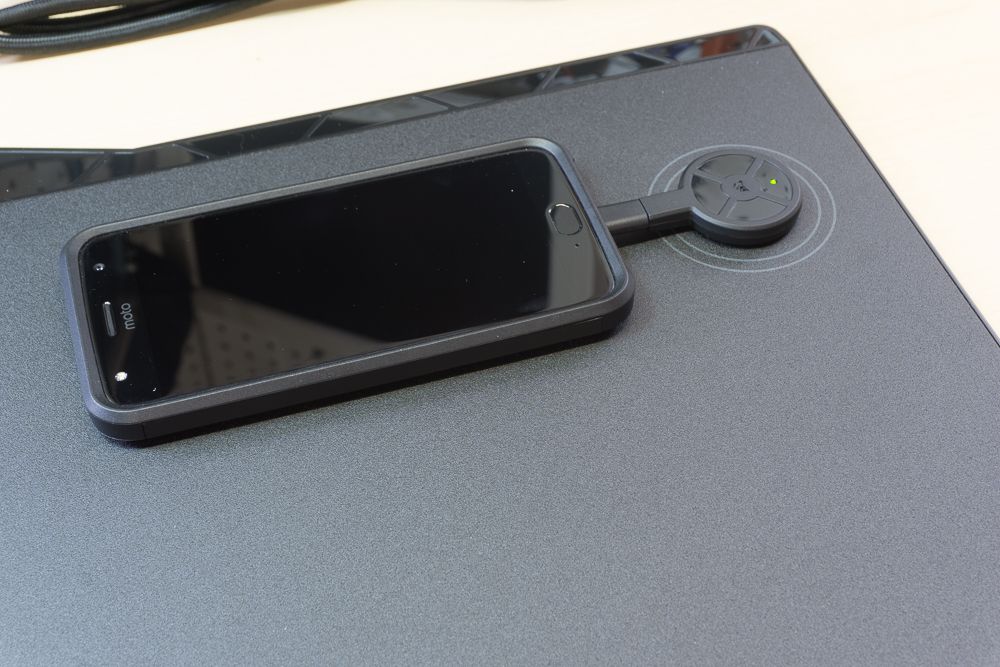
If your phone or USB device isn’t natively compatible with Qi, the MM1000 has you covered. An included USB dongle allows such devices to draw power from the pad. The decision to use a USB Micro B connector as the dongle’s native plug, however, isn’t in line with current charging trends. Native USB Type-C would have been a better choice. USB-C and Apple Lightning adapters are included, but they make the dongle so long that it becomes unwieldy. Charging my Android One Moto X4 with the dongle was an awkward and connector-stressing experience.
The MM1000’s surface is heavily textured, particularly when compared with traditional hard mouse pads like the Func F10.S, so it feels slightly bumpy during use. The texture is designed for optimal mouse sensor tracking, but in our opinion it may be too aggressive. After a few minutes of use, and several arm-weight mouse flicks, the Dark Core RGB SE’s feet were noticeably scratched. Expect to burn through mouse feet at a fast pace. You’ll also need to clean the pad with a brush or textured cloth.
Void Pro RGB Wireless Headset
The Void Pro RGB (which you can find on Amazon) iterated on the original Void by offering bigger ear cups, and it also replaced the original mic with a unidirectional version. Corsair claimed that the Pro has better overall sound quality than its progenitor. It uses a proprietary audio transmission protocol; Bluetooth connectivity is unavailable.
The headset can produce numerous sound profiles via software EQ. Its EQ-less sound may not be ideal for competitive gaming due to a heavy bass emphasis and muddied high frequencies. The sound is much more competition friendly once you enable “Clear Chat” because it boosts mid-high frequencies. Dolby Surround, another feature advertised by Corsair, seemed to add little to our gaming experience. Increased separation between audio cues created an artificial soundstage that didn’t indicate direction consistently.
The mic transmitted clear audio and isolated reasonable amounts of noise. When we used the microphone while gaming in a busy computer club room, remote teammates said that they heard small amounts of background noise. Nearby laughs and other booming sounds transmitted at a reduced, but still audible, volume.
The headphones weigh approximately 385g (13.5oz.), which is more than most comparable wireless headsets on the market.. A few headsets, like the SteelSeries Arctis 7 (280g, 9.9oz.), are more than 100g lighter. Others, like the Logitech G933 (374g, 13oz.), are in a similar class. Metal components lend the Void Pro RGB a metallic quality that all-plastic models like the Sennheiser PC360, a traditional wired headset, lack. Yet, even with its metal components, the Void Pro RGB’s plastic shell can feel a little fragile. Its different material qualities present an odd dichotomy.
We did not experience audio stutter, signal loss, or driver issues while using the Void Pro RGB. It was entirely plug and play. The only complaint we had related to the left earcup buttons. Whenever the headset is jarred, they rattle.
Will It Blend?
Yes. Corsair managed to make all of its discrete parts work together. If you’re serious about maximum convenience while gaming on the couch, this is a huge step in the right direction. Nevertheless, there are still improvements to be made. A few ergonomic oversights and usability hiccups are worth highlighting.
Transitioning from a hard mouse pad, the MM1000, to the soft cloth surface on the Lapboard might be a bit jarring for some gamers. Having a hard-surfaced replacement option for the Lapboard would be a nice way to keep things consistent. Corsair doesn’t have any plans to release a hard replacement pad, though, as the company thinks it would be too slippery for a lapboard surface. Even the cloth pad allows the mouse to slip around a bit though, forcing you to keep your hands on it, so we don’t necessarily agree with Corsair’s reasoning there.
Removing the K63 from the Lapboard is easy, but it’s still not convenient to haul your keyboard and mouse from couch to desktop (and vice versa). We often left the Lapboard and K63 in their final form while keeping wired keyboards at our battlestations. In our experience this keyboard-and-lapboard combination worked best as an addition to desktop setups, not a replacement. The Void Pro RGB and Dark Core RGB SE are easy to take back and forth if your primary system is hooked up to the living room television. That isn’t the case if you have two discrete gaming machines
The whole Corsair wireless ecosystem hinges on your desktop being connected to your desk and living room television or to your living room television alone. If you have separate gaming rigs, transferring the dongles between computers will be a serious pain. If you don’t move the dongles, you’re left with the higher-latency (7.5ms) Bluetooth connection. There are wireless pairing options for Corsair’s proprietary 2.4 GHz protocol that could allow for multiple dongles on different computers, but the pairing process itself would be inconvenient unless peripherals could “remember” multiple dongles.
You’ll also need a shrine dedicated to charging wireless gear. The Void Pro RGB headset and Wireless K63 keyboard require charging wires. If your desk and rig are in your living room, it’s not much of an issue (provided no one in your household minds having the gear parked in the living room at all times). Void headsets can also benefit from a stand. Leaving them flat on a high-use surface, like a coffee table, with a USB cable plugged in begs for a broken connector. The Corsair ST100 RGB stand, which sports a Void Pro, is a valid option. (Our DIY Lego stand doesn’t offer RGB or USB ports. Sadly, it can’t compete.)
If you can work with those caveats, Corsair’s wireless ecosystem is worth checking out.
-
aquielisunari Reply20706659 said:Corsair aims for the living room with a family of wireless peripherals, including a lapboard that solves some of the problems we encountered with the company's Lapdog.
Gaming On The Couch: Corsair's Next-Gen Wireless Peripherals, Hands On : Read more
I think Corsair is trying to hard or is it Tom's? Idk.
I've been gaming away from the computer desk ever since I had a wireless mouse and keyboard. -
Jeff Fx Reply20706672 said:20706659 said:Corsair aims for the living room with a family of wireless peripherals, including a lapboard that solves some of the problems we encountered with the company's Lapdog.
Gaming On The Couch: Corsair's Next-Gen Wireless Peripherals, Hands On : Read more
I think Corsair is trying to hard or is it Tom's? Idk.
I've been gaming away from the computer desk ever since I had a wireless mouse and keyboard.
I had a faux-leather couch that a laser mouse couldn't track on. They track fine on cloth-covered furniture. I think this is a very niche product. -
pegnose I don't understand this design. Such a keyboard should come with a substantial battery, and you should be able to plug in each and every mouse you like with data transmitted over the same wireless uplink.Reply
I want sofa gaming, and I have to buy a new mouse? Are you kidding me?!
Someone didn't think here. -
Th3pwn3r You only have to spend $240 to use the new lapboard. Yeah, Corsair can shove it. At least the old lapboard included cables that allowed use of wired peripherals.Reply

